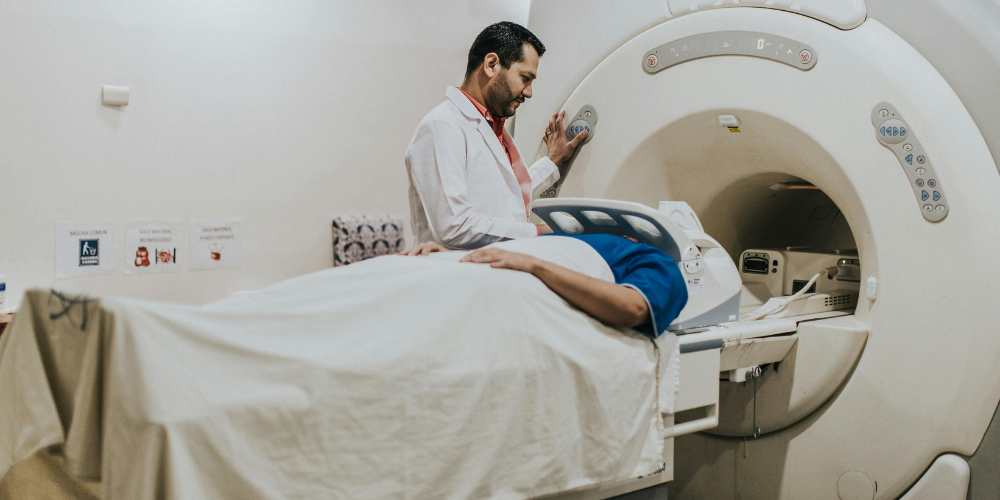Full-body MRI scans claim to catch hidden health threats before symptoms begin. These scans image the body from head to toe in about an hour. They avoid radiation, which appeals to many looking for safer preventive tools. High-profile names, including “Dwyane Wade”, have spoken publicly about the value of early detection through such scans. His scan revealed kidney cancer early, a fact that sparked public interest.
But while the marketing buzz builds, many doctors urge caution. They emphasize that scans can uncover harmless issues, which often lead to unnecessary anxiety or invasive procedures.
How the scan works
Unlike CT scans or targeted MRIs, full-body MRI scans provide a wide-angle view. Picture it like a bird's-eye perspective of a city—you’ll see the skyscrapers but miss the smaller buildings. That’s how Dr. Heide Daldrup-Link from Stanford describes the limitations.
The broad view helps detect large tumors or organ abnormalities. However, it often misses small cancers or subtle signs of disease. For those situations, doctors still rely on organ-specific scans like a brain MRI or CT of the lungs.
What these scans do offer is radiation-free imaging using magnetic fields and radio waves. While that’s a clear benefit, it doesn’t eliminate all risks.
Who Might Benefit the Most?

Instagram | miekamariekster | Full body MRI scan gives a wide clear view.
Patients with rare genetic conditions like Li-Fraumeni syndrome or retinoblastoma gain the most from full-body MRI scans. These individuals face random, unpredictable cancer risks across multiple organs. A wide-scope scan can help track those threats better than traditional screenings.
Dr. Dan Durand, formerly part of Baltimore’s outcomes-based healthcare initiative, now leads medical operations at Prenuvo. The company specializes in full-body MRI scans, with prices starting around $2,500. While not covered by insurance for healthy individuals, the company believes its services reflect the future of proactive medicine.
Durand believes in its potential to uncover silent killers like aneurysms, tumors, or heart risks before symptoms arise. Still, it’s not just about rare diseases. These scans can also detect joint damage, inflamed tissues, and hidden fat around organs—early signs of chronic illness.
Guidelines From Private Providers
Prenuvo suggests the following:
1. Adults under 40 with clean initial scans - once every 2 years
2. Older adults or those with findings - yearly or more frequently
However, these guidelines come from private companies. Leading medical organizations, like the American College of Radiology, do not recommend full-body MRIs for the general population.
Potential Drawbacks of Full-Body MRI Scans
Not everyone stands to gain. In fact, healthy individuals with no known risk factors might face more harm than benefit. That’s according to Dr. Matthew Davenport from the University of Michigan.
He compares it to gambling. There’s a chance of catching something serious early, but there’s a bigger chance of unnecessary follow-ups or surgeries. Around 15–30% of scans reveal something concerning—yet most of those turn out benign.
Surgery always brings risks. Complications from anesthesia, bleeding, or infections can follow any invasive procedure. Dr. Davenport emphasizes that not every detected anomaly leads to better outcomes. Often, the discovery creates stress without extending life.
A Real-World Case
Emergency physician Calvin Sun had a full-body MRI at age 37. It revealed a kidney cyst, which prompted fast follow-up scans and a rushed surgery. Doctors expected a benign issue, yet removed the entire kidney just in case. A week later, pathology confirmed it was an aggressive cancer. While the story ended well, the mental stress and uncertainty in the process highlighted the emotional cost of ambiguous scan results.
Mental Health Impacts Can Be Significant

Freepik | Drazen Zigic | Many feel anxious after full body MRI as fear of follow up and delayed diagnosis grows.
One challenge often overlooked is the psychological toll. People without symptoms suddenly become patients. Many spend weeks consumed by fear, waiting for follow-up results or surgery dates.
Even worse, when scans show nothing alarming, patients may skip other essential screenings. Full-body MRIs don’t always detect small tumors in areas like the colon, prostate, or lungs. This gives a false sense of security, leading to missed diagnoses later.
The Bigger Medical Picture
Experts stress that full-body MRI scans should not replace regular doctor visits or approved screenings like mammograms, colonoscopies, or blood tests. These foundational tools remain essential, even if a high-tech scan offers detailed insights.
Doctors also point out that many diseases, including cancer in young adults, continue to baffle researchers. Genetic tests and family history evaluations remain key for identifying personalized risk and guiding more targeted screenings.
Full-Body MRI Scans in the Future of Medicine
Technology is evolving. MRI machines grow faster, more accurate, and better at capturing details. But questions about long-term benefits remain unanswered.
Current research aims to discover if early detection truly improves survival rates. But such studies take decades. Until more data exists, the medical community remains cautious about recommending full-body MRI scans to people without symptoms or unique risk factors.
Stay Informed, Not Overwhelmed
Knowing what’s happening inside the body is tempting. However, full-body MRI scans come with complexities—some helpful, others harmful. Use them with guidance, not as a substitute for expert medical care.
Although full-body MRI scans offer advanced imaging, they don’t replace trusted medical advice. For the best results, combine technology with doctor-recommended screenings. Stay informed, ask questions, and make decisions rooted in facts, not fear.













